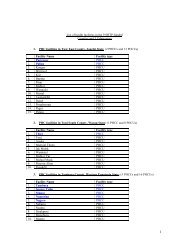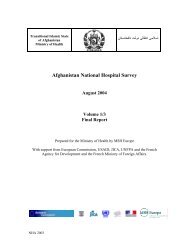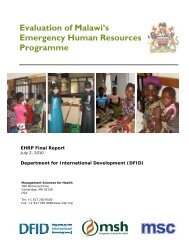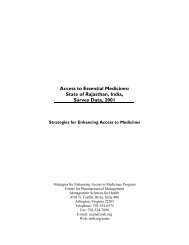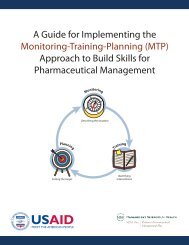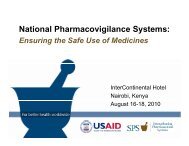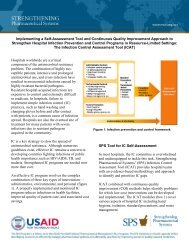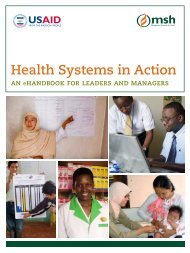CLINIC SUPERVISOR'S MANUAL - Management Sciences for Health
CLINIC SUPERVISOR'S MANUAL - Management Sciences for Health
CLINIC SUPERVISOR'S MANUAL - Management Sciences for Health
Create successful ePaper yourself
Turn your PDF publications into a flip-book with our unique Google optimized e-Paper software.
SECTION 5: INFORMATION SYSTEM GUIDELINES<br />
MATERNAL HEALTH INDICATORS - continued<br />
Name ANC visits per client<br />
Targets The National target is that 90% of women should have three at least ANC visits<br />
Definition Average number of antenatal visits by women coming to antenatal care.<br />
Calculation<br />
26 Clinic Supervisor’s Manual<br />
Numerator: All ANC visits (first and repeat visits all included)<br />
Denominator: First ANC visits<br />
Rationale All pregnant women should have at least three visits in each pregnancy. This indicator does NOT<br />
measure visits by each woman, but measures the average number of visits.<br />
Data source Tally sheets, Registers – either Tick register or maternal health registers<br />
Common<br />
problems<br />
Actions to<br />
consider<br />
Other possible<br />
indicators<br />
Women who have started ANC elsewhere, but who come to your facility <strong>for</strong> follow up should be<br />
counted as subsequent ANC and NOT first ANC.<br />
Low repeat visits means that there may be problems with the acceptability of the services provided<br />
and the attitude of staff needs to be investigated.<br />
% Of antenatal clients having three visits (if data is available)<br />
% Referred to hospital<br />
%WR positive who are treated (important quality measure – should be 100%)<br />
Name Institutional Delivery coverage<br />
Targets The National target is 80%; some provincial targets are much lower but some achieve almost 100%.<br />
This depends largely on delivery infrastructure, access to transport and customs of the population.<br />
Definition The percentage of deliveries from the catchment population taking place in this reporting health<br />
facility under supervision of trained personnel.<br />
Calculation<br />
Numerator: Number of deliveries conducted in this institution in the reporting period<br />
Denominator: Total expected deliveries in this population <strong>for</strong> the same time period The number of<br />
children under one year is used as a proxy denominator <strong>for</strong> expected deliveries per<br />
year – divide by 12 <strong>for</strong> monthly estimate.<br />
Rationale The proportion of deliveries done by the institution is an indicator of accessibility and acceptability of<br />
the health services.<br />
Data source Maternity (delivery) register<br />
Expected deliveries is 2.2 –3.4% of population (discuss with supervisor)<br />
Common<br />
problems<br />
Actions to<br />
consider<br />
Many clinics report deliveries of their clients that occurred in institutions ELSEWHERE. This causes<br />
double reporting <strong>for</strong> they are reported from the place where they actually deliver as well.<br />
As most deliveries occur in hospitals, this indicator is really only valid at the district level where all<br />
deliveries in all institutions are added together and compared to all expected deliveries in the district<br />
population.<br />
If less than 80% (? 60% in rural areas) of deliveries in the district occur at health facilities, (or with<br />
trained assistance), your maternal health services need to be re-examined. The facilities need to be<br />
assessed <strong>for</strong> capacity to provide emergency services.



